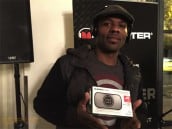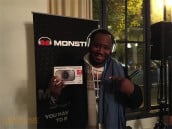Find Our Latest Video Reviews on YouTube!
If you want to stay on top of all of our video reviews of the latest tech, be sure to check out and subscribe to the Gear Live YouTube channel, hosted by Andru Edwards! It’s free!
Latest Gear Live Videos
The Blank Screen: How Apple Outsmarts Competitors

Posted by Andru Edwards Categories: Apple, Smartphones, Editorial, Features, Home Entertainment, Software,
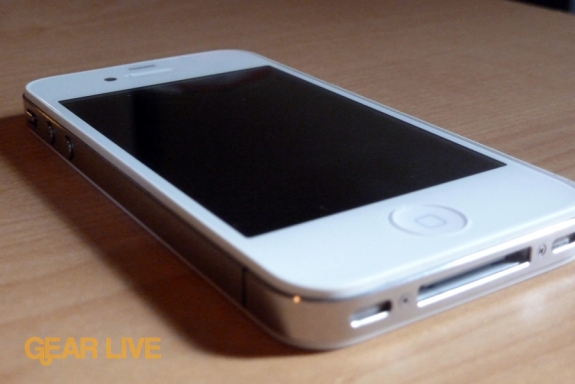
When the iPhone was launched in 2007, I met with Phil Schiller, SVP of World Wide marketing for Apple, and Greg Joswiak, the Apple VP in charge of marketing the iPods and iPhones. During the meeting they showed me the iPhone's many features and shared their goals for the device, which has now become a major business for Apple.
During that meeting, they made a comment that I believe is really the heart of Apple's secret sauce and the cornerstone of how it continues to outsmart its competitors. They laid the iPhone on the table, with it turned off, and asked me what I saw. I told them I saw a 3.5 inch blank screen. They said that from Apples point of view, the "magic" of the iPhone is strictly in the software. And, they de-emphasized the hardware.
Yes, the iPhone was a slick smartphone with a great screen and, at the time, it broke new ground in smartphone design, and Apple was very proud of that. However, with the iPhone turned off, it had very little value. But once it was turned on, the iPhone's OS and apps turned it into a completely different device. While it was a phone, the software made it much more—it became a vehicle for applications. It also had another component that really made it sing and dance; it was also an iPod and was tied directly to iTunes. Now it morphed into a much broader multi-purpose device. It was a phone, a vehicle for apps, and an iPod, which made it a great personal mobile entertainment system.
Click to continue reading The Blank Screen: How Apple Outsmarts Competitors
Gallery: The Blank Screen: How Apple Outsmarts Competitors
Advertisement
Why the Flip camera failed

Posted by Andru Edwards Categories: Cameras, Editorial, Features, Handhelds, HDTV, Portable Audio / Video,
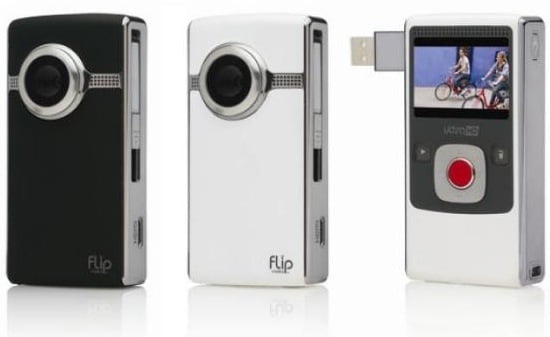
The Flip was never my favorite pocket camcorder. That's partly because it was the darling of everyone else and also because I found more powerful options elsewhere, like the Kodak Zi6 (and then Zi8). Both offer HD video capture, a microphone-in jack and removable media. Flip didn't offer any of that; the Flip team always told me that those features would likely confuse consumers who just wanted to capture video.
Now I realize they were right. In fact more right than any of us had imagined.
A day after Cisco unceremoniously dumped its $590 million purchase in favor of a pure business strategy, Flip owners and even the Flip CEO are busy licking their wounds and wondering exactly what happened. I'll tell you what happened: A device came along that made video capture and sharing even easier than the Flip—end of story.
Flip's demise has to be one of the most spectacular flameouts in recent tech history. When I met with Flip last year (just prior to the launch of the ill-fated Flip SlideHD), Flip had marketshare numbers that looked not only unbeatable, but unstoppable. According to Cisco executives:
- Flip sales grew by 300 percent between 2008 and 2009.
- Flip led the category throughout the 2009 holiday buying season.
- Flip sold more units than Sony, Canon, Kodak, and JVC combined.
- Flip cameras were number nine out of Amazon's top 10 selling products.
- The "Shoot and Share market" grew over 35 percent in 2009 and and Flip's share of that? A whopping 93 percent.
- On CNN's popular iReport user-generated news section, 70 percent of the user-gen video was shot with a Flip.
This was the success story to beat all success stories. And while I complained even then that Cisco wasn't innovating enough with the Flip brand—I wanted a microphone jack and was begging for them to be the first to offer optical zoom—I could not argue with its success.
Click to continue reading Why the Flip camera failed
Gallery: Why the Flip camera failed
Amazon is stealing Android from Google

Posted by Andru Edwards Categories: Smartphones, Editorial, Features, Google, Software,

I have been watching Amazon's recent moves involving Android with great fascination. Two weeks ago, it launched the Amazon Appstore that focuses on Android apps, and last week it announced a cloud-based music service with a special version just for Android. Although Google has its own Android Marketplace, Amazon is bringing a more structured store to Android with room for users comments and reviews—a key step to vetting the apps it carries.
This is a very strategic move by Amazon, and it could actually bring some sanity and consistency to the Android development community and all Android users. At the moment, Google's approach to creating Android is scattered. There are so many versions of this OS floating around that the OEMs who license Android are increasingly frustrated with Google's lack of discipline in laying out a consistent roadmap for Android that they can follow.
At first, Google said it would have one version of Android for smartphones and another for tablets. Now it says that it will merge both versions into a product codenamed Ice Cream and that it most likely will be the same OS used on Google TVs in the future as well. Initially, vendors could only use one version for devices with up to 7 inch screens and another one for screens larger then 7 inches but less then 11 inches.
Click to continue reading Amazon is stealing Android from Google
Gallery: Amazon is stealing Android from Google
A look at the remarkable rise of Android, and where it goes from here

Posted by Andru Edwards Categories: Smartphones, Editorial, Features, Google, Software,
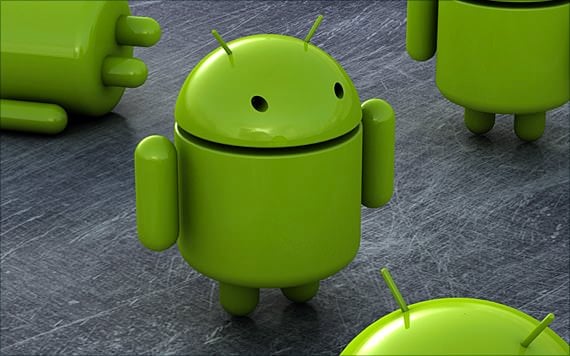
Two and a half years ago, Sergey Brin, Larry Page and T-Mobile introduced the world to the very first phone, the G1. It was a good phone with a workmanlike design, decent keyboard, an average screen and lots of Google goodness built right into it. No one, least of all me, thought it stood much of a chance against the surging Apple iPhone.
For a solid year, the platform looked like a dud. But a funny thing happened on the way to the morgue.
Seven months later, T-Mobile unveiled the keyboard-less MyTouch 3G. As before, it was a nice looking, though slightly curvier, Android phone. It wasn't until the fall of 2009, more than a year after the G1 and Android's launch, that the platform got interesting. That was when Motorola started talking openly about the Droid. By casting aside just two letters and joining with the leading mobile carrier that didn't get the iPhone, Motorola and Google signaled their intention to make Android bolder, sexier and far more desirable.
Click to continue reading A look at the remarkable rise of Android, and where it goes from here
Gallery: A look at the remarkable rise of Android, and where it goes from here
Follow your favorite baseball team on Opening Day the geeky way

Posted by Andru Edwards Categories: Editorial, Home Entertainment, Software,
Spring has sprung, and the best thing about spring isn't the warmer weather or the allergies—it's the baseball. The 2011 MLB season begins Thursday, taking over the lives of fantasy owners and fans alike for the next seven to eight months (depending on how good your team is). Whether you're at work, at home, on on the road, here are a few ways to track your favorite team.
MLB at Bat 11
MLB at Bat 11 is the sanctioned-by-the-league option for following your favorite team throughout the year. It's an app for iOS, Android, BlackBerry, Mac OS, Windows, and other platforms, and it lets fans watch out-of-market games (crucial if your team isn't your local team), track every statistic you can think of, and see "Live Look-Ins" whenever something critical is happening in another game.

There's a lot packed into the MLB at Bat app, but it comes at a cost: the app itself is $14.99 (there's also a very stripped-down version that's free), but if you want to watch live games you'll need a subscription to MLB.tv, which starts at $99 for the season. Luckily, thanks to a deal MLB made with Volvo, you won't need a subscription for the first month of the season, so you can try before you buy.
MLB.TV on Roku and Apple TV
If you own a Roku box ($69 at Amazon) or an Apple TV ($99 at Amazon), you're already almost all set up to watch baseball this season. With an MLB.tv subscription (the same one you'll need for the MLB at Bat app), you get access to live-streaming games via your Roku box or your Apple TV, along with plenty of other features like fantasy player tracking, DVR controls, and even on-demand access to local games (which you can't watch live) 90 minutes after the game ends.
Click to continue reading Follow your favorite baseball team on Opening Day the geeky way
Gallery: Follow your favorite baseball team on Opening Day the geeky way
Will Amazon Cloud Player be successful?

Posted by Andru Edwards Categories: Editorial, Features, Music,
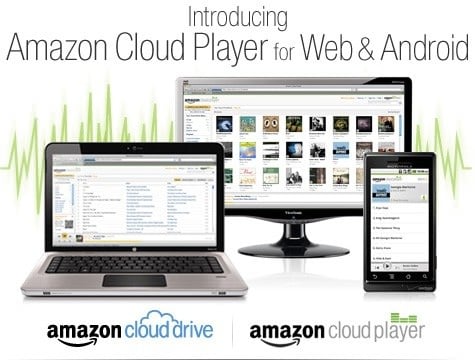
Amazon needs a way to hold on to its music customers in a post-CD era, and tightly integrating its new cloud music service with Amazon MP3 purchases might help it do that, but the concept of a "music locker" is not exactly the most innovative approach and could face licensing issues, according to analysts.
Earlier this week Amazon unveiled a new cloud-based music service that provides users with up to 5GB of free, online music storage, and 20GB of free access for a year if they purchase an album via Amazon MP3. Beyond that, it's $20.
"Amazon needs to establish a strong post-CD role for its music customers, [and] this smartly positioned locker service is an important first step in building that future role," Mark Mulligan, a Forrester research analyst, wrote in a blog post.
Mulligan cautioned, however, that Amazon Cloud Player is not exactly revolutionary. "As logical a next step in the digital music market as locker services might be, they're not an innovation in the music product. They're simply giving people access to the music they have on the devices they own."
Click to continue reading Will Amazon Cloud Player be successful?
Gallery: Will Amazon Cloud Player be successful?
Will the Nintendo 3DS pave the way for a 3D iPhone?

Posted by Andru Edwards Categories: Smartphones, Editorial, Features, Video Games,

The new Nintendo 3DS promises to be a success not only because it actually works well and does indeed provide a 3D image without any glasses or aid whatsoever, but because it takes amusing 3D photos and is just fun to play with.
When all is said and done, the Nintendo 3DS may actually accomplish what Fuji has been promoting and what many 3D hobbyists have tried: popularizing 3D photography for everyday use.
And, yes, we know that it's a gimmick. But it's a cool gimmick.
After taking a few 3D pictures of just about anything, you'll find that they are so compelling that it is hard to express the odd joy you get from them. This is the key to the eventual success of home 3D. It has always failed in the past, because it was somebody else's 3D. It was never personal.
Photography itself never flourished as a hobby when the cameras were the big bulky clunkers utilized by Matthew Brady and others. Think about this. Photography was nothing new during the Civil War in the 1860's, but all the photos were done by a limited number of pros. You have to wonder what the Civil War would have been like if everyone had a cell phone camera like we do today.
Then Kodak produced the Brownie and gave photography to everyman. Next thing you knew, photography became the number one hobby in the world. 3D is following that same pattern. It's just odd that a game company, Nintendo, is the Kodak and the 3DS is the Brownie.
Click to continue reading Will the Nintendo 3DS pave the way for a 3D iPhone?
Gallery: Will the Nintendo 3DS pave the way for a 3D iPhone?
It’s official: I’m addicted to 4G

Posted by Andru Edwards Categories: Broadband, Smartphones, Editorial, Wireless / WiFi,
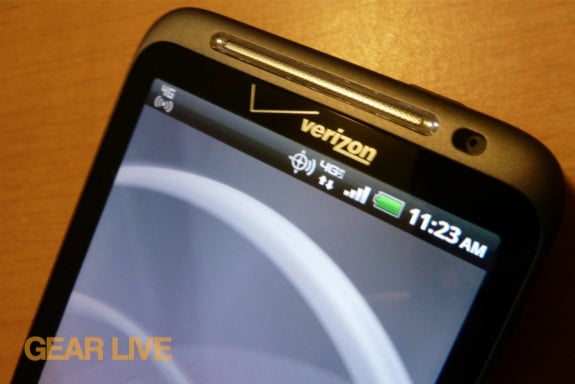
I'm addicted to 4G, and it could happen to you, too.
By now, almost everyone has seen TV commercials advertising 4G phones. Essentially, a 4G mobile hotspot lets you work anywhere as if you were at home or in the office with a fast broadband connection. With sustained average download speeds in excess of five megabits per second, it's likely you won't be able to tell the difference.
Granted, many felt the same way about the first 3G cellular modems released several years ago. But the Web has become much more advanced since then; all that extra AJAX and HTML5 code takes more bandwidth. People are also streaming more music and video these days. As a result, 3G no longer seems like enough.
In addition, the Apple iPhone 4 and Android smartphones running OS 2.2 (commonly known as Froyo) now offer mobile hotspot capability. That means that for an extra monthly fee, you can use your phone as a 4G hotspot for up to five devices—or even eight, in the case of the HTC Thunderbolt. You no longer need to buy a separate cellular modem, which was really just one more thing to carry around, charge all the time, and worry about losing. Mobile hotspot access averages $20 per month across the major U.S. carriers. That's not chump change, but it's a long way from the $50 to $60 per month a separate USB modem normally costs.
Click to continue reading It’s official: I’m addicted to 4G
Gallery: It’s official: I’m addicted to 4G
AT&T Buys T-Mobile: Good for AT&T, Bad for Customers

Posted by Andru Edwards Categories: Corporate News, Editorial, Features, Wireless / WiFi,
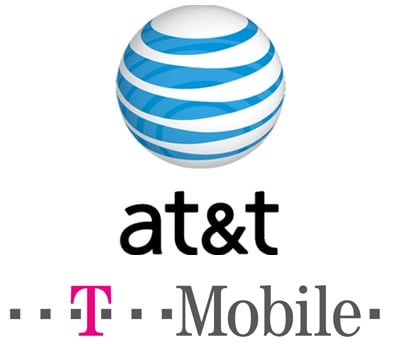
AT&T just announced it will buy T-Mobile USA for $39 billion. If the transaction gets approved by the government and closes in a year as planned, it will create the nation's largest wireless carrier by far.
While this is great news for both companies, it's an awful idea for consumers - and I desperately hope the US antitrust authorities rake this merger over the coals.
An AT&T/T-Mobile merger at least makes more sense than the silly T-Mobile/Sprint idea which was being bandied about. Both carriers use the same technologies: GSM, HSPA+ and LTE. While they're on different frequency bands, radios which use all of the relevant bands are becoming easier to build.
The merger neatly solves T-Mobile's long-term problem of not having enough spectrum for LTE, the 4G technology which will soon be a global standard. It gives T-Mobile's struggling parent, Deutsche Telekom, a gigantic cash infusion. And it lets AT&T once again position itself as the number-one carrier against Verizon Wireless, which leapfrogged AT&T technologically this year with Verizon's 4G LTE launch.
AT&T is ahead of T-Mobile on building LTE. T-Mobile is far ahead of AT&T on building HSPA+, a intermediate 4G technology that fits right between the carriers' existing 3G networks and LTE. Together, they could have a smooth and powerful nationwide network.
AT&T's press release for the merger backs this up. The combined carrier will be able to build out much more LTE Than AT&T could alone, by combining AT&T's 700 Mhz spectrum with T-Mobile's AWS spectrum.
For stockholders, this all sounds great. With reduced competition and the efficiencies of a combined network, the new company will probably be quite profitable.
For phone owners, tech lovers, and American consumers, this is a total disaster.
Click to continue reading AT&T Buys T-Mobile: Good for AT&T, Bad for Customers
Gallery: AT&T Buys T-Mobile: Good for AT&T, Bad for Customers
Zune Death: Why no word from Microsoft?

Posted by Andru Edwards Categories: Editorial, Features, Microsoft, Portable Audio / Video,
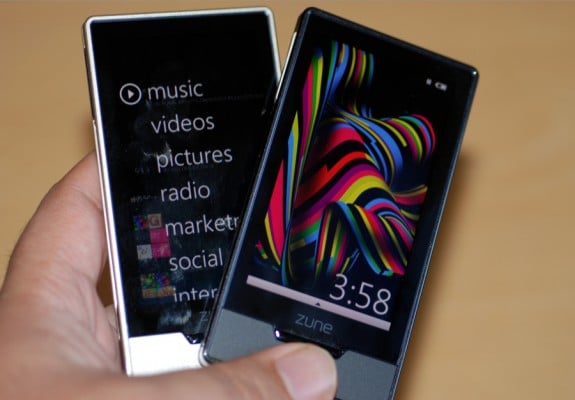
Dear Microsoft: Manage your message or someone will do it for you. Case in point: the recent, none-too-surprising news that the lovely Zune HD will meet a timely death. Within minutes of the news breaking, stories and tweets flooded the Internet declaring, "The Zune is Dead." This was followed by people asking if everything "Zune" was gone or just the hardware. I assured people that the obvious answer was the hardware only, but is it that obvious? And why wasn't Microsoft out in front of this information?
Yes, the fact that Microsoft is giving up on music player hardware is bad news for Microsoft and good news for Apple, but it's up to Microsoft to stand up and explain its decision and strategy. In the absence of clear information from Microsoft, everyone else can and will shape the message. So now, even though most within the industry are quite sure that the Zune software and service, which lives on in phones and PCs, is in no danger, average consumers are no longer certain. They could at this very minute be making plans to switch to Apple, iPods and iTunes.
If I were Microsoft CEO Steve Ballmer, I would have stepped forward and explained the shift away from music-only hardware (leaving aside the fact that most music players do a whole lot more). Then, while wiping away one single tear, I would have quickly shifted gears to a clear strategy, which isn't even new: "For mobile devices, we're focusing our attention on Windows Phone, which already has Zune and Xbox Live functionality." Then I'd add, "This, friends, is not a loss. Lessons we learned from Zune hardware's five-year life have given us invaluable insight and made it possible for use to deliver the Windows Phone platform and some truly stellar partner-driven hardware to wrap around it."
Click to continue reading Zune Death: Why no word from Microsoft?
Gallery: Zune Death: Why no word from Microsoft?
Advertisement
© Gear Live Inc. {year} – User-posted content, unless source is quoted, is licensed under a Creative Commons Public Domain License. Gear Live graphics, logos, designs, page headers, button icons, videos, articles, blogs, forums, scripts and other service names are the trademarks of Gear Live Inc.


